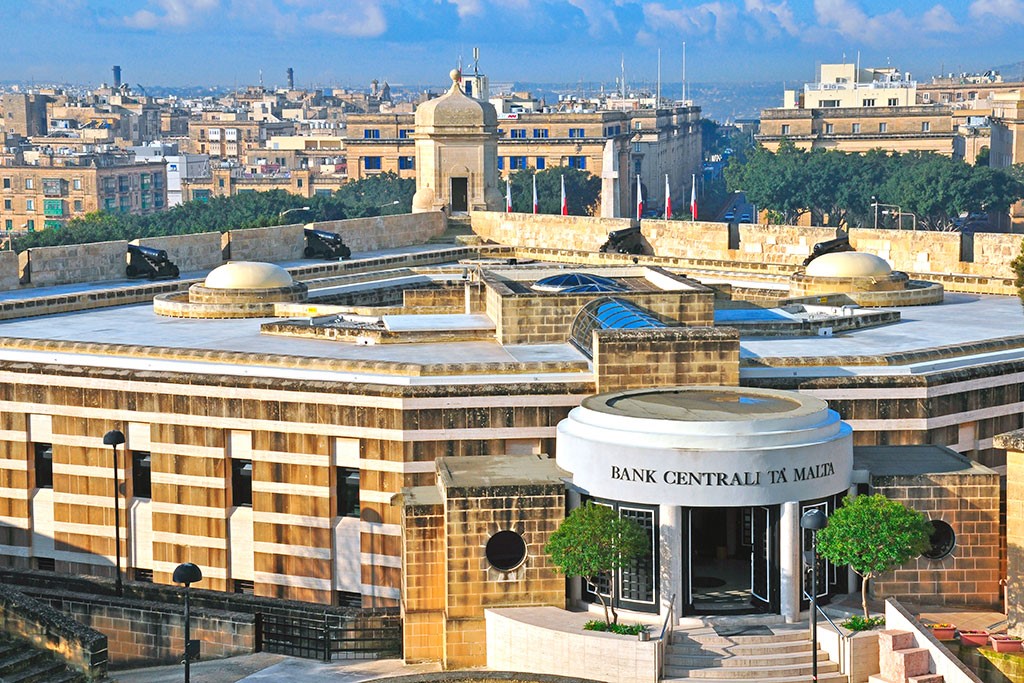In the light of the pandemic situation, which has continued to develop during recent months, the Central Bank of Malta (the Bank) expects Malta’s gross domestic product (GDP) to contract by 7.5 per cent this year, down one per cent from its forecast in August.
The downward revision of the Bank’s forecasts reflects the re-introduction of containment measures and renewed signs of deterioration in business sentiment, which are expected to dampen the global economic recovery in the near term. Nonetheless, the Bank expects 2019 GDP levels to be re-attained and exceeded in 2022, conditional on the successful rollout of a vaccine in 2021.
Subsequently, the Bank predicts GDP will grow by 5.9 per cent in 2021, by 4.4 per cent in 2022, and by 4.2 per cent in 2023. Interestingly, the growth rate it is predicting for 2021 outstrips Malta’s five per cent GDP growth rate pre-COVID, in 2019.
A decline in net exports is projected to be the main contributor to the contraction in GDP in 2020, reflecting a sharp drop in foreign demand, restrictions on travel-related activities, and disruptions to the global supply chain.
However, domestic demand is also expected to contribute negatively, as the shut-down of various activities during part of the year and elevated levels of uncertainty adversely impacted private consumption and investment. However, increased government consumption partly offset the fall in private demand.
Domestic demand is expected to be the main driver of the projected recovery in the following years even though Government assistance measures are expected to be reduced gradually.
Despite the sharp contraction in 2020, the labour market has so far shown remarkable resilience, the Bank noted.
Unemployment initially rose during the first wave of COVID-19, but has since declined, as fiscal measures have been very supportive in this respect.
Hence, employment growth is set to remain positive in 2020, though it will moderate from 2019. It is then expected to pick up gradually in the following years, reaching 2.5 per cent in 2023. These forecasts constitute an upward revision from the previous set of projections.
Annual inflation based on the Harmonised Index of Consumer Prices is set to ease to 0.8 per cent this year, down from 1.5 per cent in 2019, reflecting lower domestic and international price pressures. However, these downward pressures are mitigated in part by cost-push factors, in the context of disruptions to the global supply chain.
Inflation is set to edge up to 1.6 per cent by 2023, reflecting a pick-up in economic activity which should lift prices of services and non-energy industrial goods inflation.
Public finances are expected to deteriorate in 2020 due to the decline in economic activity and the introduction of COVID-19 related fiscal support.
The Bank is now projecting that the general government will record a deficit of 9.4 per cent of GDP in 2020, having revised its economic growth projections downwards from what was previously expected. In its budget for 2021, the Government will be extending some COVID-related measures.
The deficit is therefore expected to persist through 2021, although it is expected to narrow to 6.4 per cent. As economic activity improves and COVID-related support is tapered off, the deficit is set to narrow further to 4.0 per cent of GDP by 2023. Moreover, the government debt-to-GDP ratio is projected to rise from 42.6 per cent in 2019 to 60.5 per cent by 2023.
Given the prevailing uncertainty, the Bank has also published a more severe scenario in which it considers the effects of maintaining some restrictive health protocols beyond 2021. In such a scenario, the contraction in GDP could reach 9.4 per cent this year. GDP growth should then rebound to 5.5 per cent in 2021, before moderating again to 3.7 per cent and 3.6 per cent in the following two years.
In this scenario, the 2019 level of GDP would be exceeded only in 2023. Additionally, the Government deficit would deteriorate more sharply in 2021, reaching 9.8 per cent, before narrowing to 5.5 per cent by 2023 while the government debt-to-GDP ratio would rise to 68.6 per cent by then.
More details on the Bank’s latest projections can be found here.
Two years since its birth, Moneybase features on Microsoft’s Customer Stories
Moneybase has now just been featured on Microsoft’s latest Customer Stories
Finance Minister confirms continuity of food and energy subsidies
Spending on food and energy subsidies as a percentage of the GDP will be at 0.7% in 2025
MHRA congratulates Glenn Micallef on EU role, highlights positive impact on Malta’s tourism and cultural sectors
The lobby group emphasised that Malta’s cultural assets and sports scene are key factors in attracting visitors and fostering economic ...






